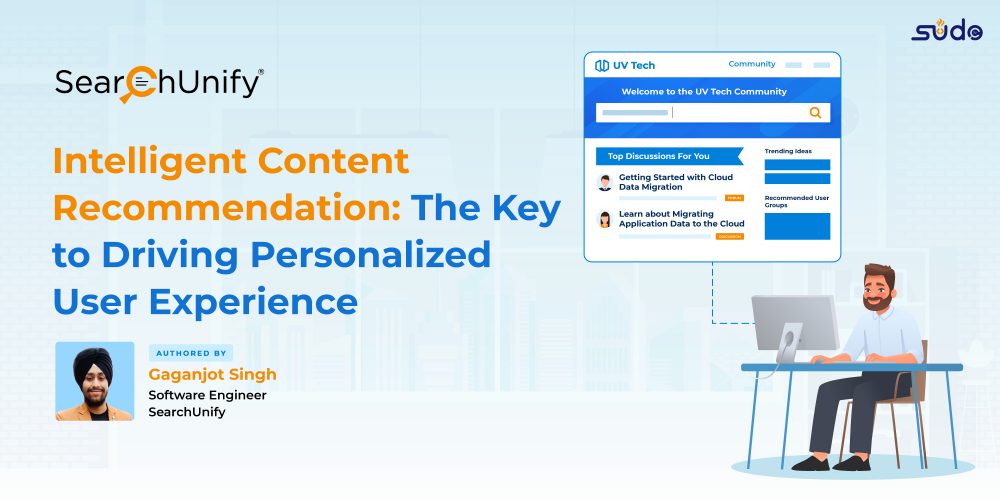
76% of users say they are more likely to purchase from brands that personalize.
Modern customers are smarter than ever, and demand a wow experience. Whether it is about browsing the website, shopping online, or streaming series, they expect to find only relevant and personalized recommendations. Enter intelligent content recommendations! It uses artificial intelligence (AI) and machine learning (ML) algorithms to analyze user data for delivering the best-suited content.
Let’s consider the most beloved streaming platform, Netflix. Its recommendation system takes into consideration users’ viewing history, search history, ratings, etc., to suggest movies and shows that they might be interested in. I mean, you must be acquainted with the ‘Top Picks for You’ section.
Online aggregators like Amazon are another good example. They recommend potential products based on the user’s likes and dislikes. But is it enough in an era where customer experience is paramount?
Customers don’t just want to be wow-ed but demand a truly intelligent and immersive experience everytime they look for information. That means business need to:
- Enhance user experience
- Refine content discovery
- Drive conversion rate
- Reduce bounce rate
Let’s see how brands are going about their recommendations to achieve the desired results.
ALS Matrix Factorization: The Standard Approach For Content Recommendation
The majority of customer-driven organizations rely on ‘ALS (Alternating Least Squares) Matrix Factorization,’ a popular approach for content recommendation systems. It is a type of collaborative filtering technique used to deliver personalized recommendations to users based on their historical interactions with content.
In ALS, the user-item interaction matrix is factorized into two lower-dimensional matrices: one for user preferences and the other for item attributes. The product of these two matrices gives the predicted rating for a user-item pair.
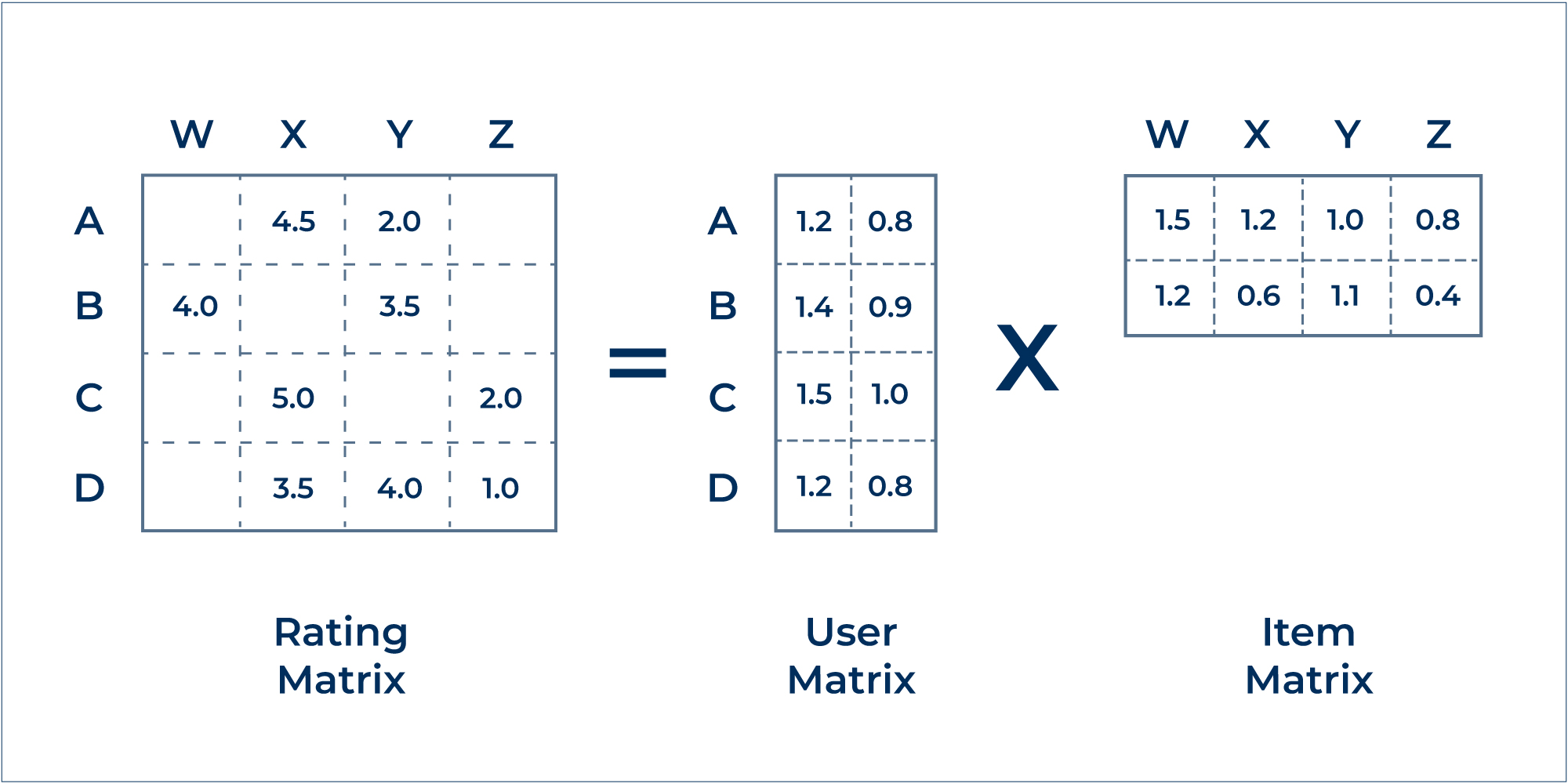
The ALS algorithm repetitively updates these two matrices until the predicted ratings converge to the actual ratings. It alternates between fixing one matrix and optimizing the other using least squares regression.
Once the user and item matrices are comprehended, it is easy to generate recommendations for new users. It can be done by calculating the similarity between the new user and existing users using their user matrices. Items that are rated highly by similar users (as represented by their item matrices) are considered for recommendation.
Challenges in ALS Matrix Factorization
While ALS Matrix Factorization is a simple and convenient way to prompt intelligent recommendations, it comes with its own set of pitfalls. The most common ones include:
1. Cold Start Problem
It refers to a situation where there is insufficient data for new users or items. This makes it challenging to accurately predict their preferences or ratings.
Imagine a music streaming app that has just added new songs to its library. If its recommendation engine is based on the user’s listening history, it may not be able to suggest new songs to users who have just signed up, leaving them dissatisfied.
2. Sparsity
As the number of users and items increases, the user-item matrix becomes more sparse. This means that the majority of the cells in the matrix are empty or have a low value. As a result, it gets difficult for a recommendation engine to accurately predict user preferences or make personalized recommendations.
3. Scalability
When it comes to large datasets, ALS can become computationally expensive. This is because each iteration involves computing a large number of dot products between the latent factor matrices.
3. Hyperparameter Tuning
ALS has a wide range of hyperparameters, such as the number of latent factors, regularization parameters, and the number of iterations that need to be tuned for optimal performance. However, finding the right combination of hyperparameters consumes a lot of time and requires domain expertise.
Bridging the Gap With SearchUnify
SearchUnify, a unified cognitive platform, leverages the advanced graph-based recommender system to help businesses provide relevant and personalized content to their users. Let’s understand how!
What Is Graph-Based Recommendation?
The graph-based recommendation systems utilize graph theory to analyze relationships between different entities in a graph structure. The graph consists of nodes, which represent items (such as products, movies, songs, or articles), and edges, which represent the user-item interactions, i.e., how those items are consumed by users.
The core idea is to leverage the relationships between the entities to identify patterns that can further be used to offer personalized recommendations.
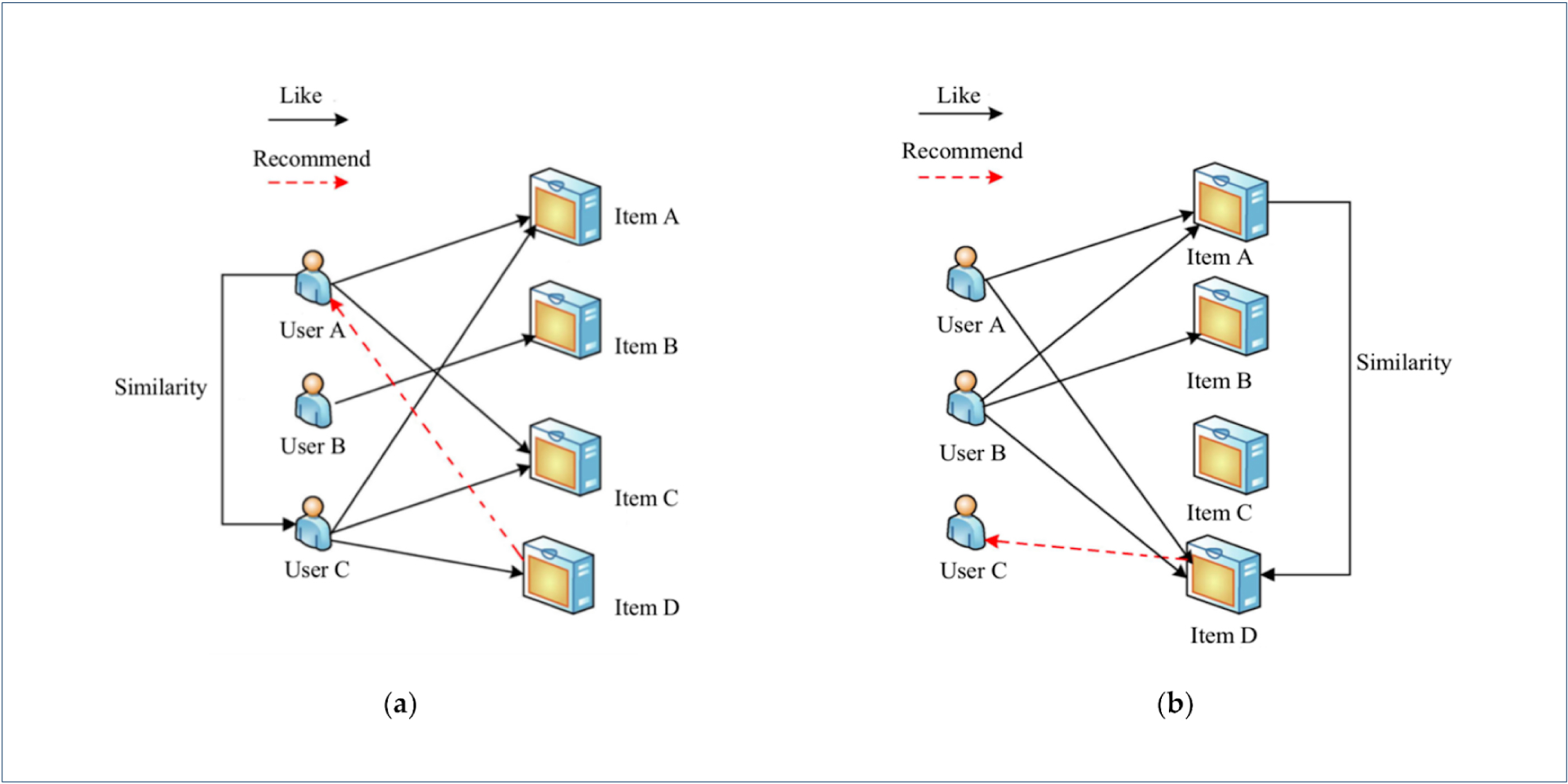
How SearchUnify Uses Graph-Based Recommendation?
SearchUnify’s graph-based recommendation system stores and analyzes relationships between distinct entities, such as users, documents, and queries. It then builds a knowledge graph that represents the connection between these entities, enabling the platform to make more informed recommendations.
Imagine a user is searching for information about “sales strategies.” SearchUnify first analyzes the query using NLP algorithms to understand the user’s intent. It then searches the knowledge graph to find the most relevant article based on the user’s search history, purchase history, and other user behavior data. Not only this, but it will also recommend related FAQs, support articles, and other helpful resources.
Now you must be wondering how the platform will help a new user with limited data. In that case, it suggests content that is frequently accessed by other users with similar search histories. It may also put forward related topics based on the new user’s search terms. This way it helps solve the problem of cold start and data sparsity.
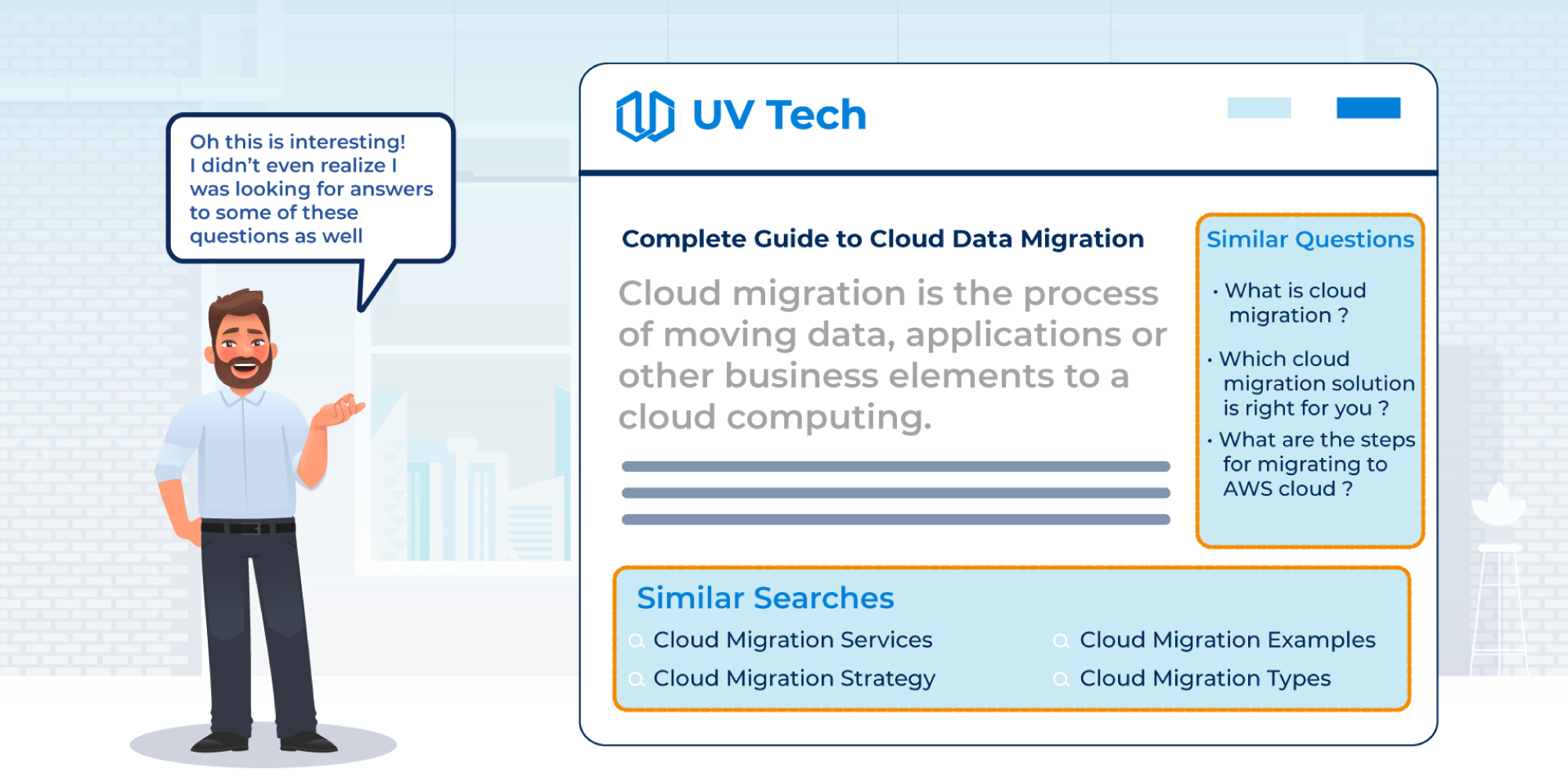
Here are the four variants of SearchUnify’s AI-powered content recommendation system:
1. Cold Start
For new users who have not interacted with the business before, SearchUnify uses K-NN clustering to find the K-nearest neighbors of the user based on their similarity with other users’ behavior. It then recommends the articles that are popular among these nearest neighbors.
2. Warm Start
When the cold start stage of the user begins to warm up, i.e., when they have made enough interaction with the business, recommendations are delivered based on the user journey.
SearchUnify analyzes their sign-up details, click history, and other behavioral data to recommend related content. It is useful for returning users at the consideration stage.
3. Search Page
SearchUnify also provides recommendations on the search results page. When a user performs a search, the system analyzes the search query and displays relevant content suggestions along with the search results. It is beneficial to users who are looking to dive deep into a specific topic.
4. Widget
When a user is reading an article, SearchUnify analyzes the content and context of the search based on the keywords and topics covered in the article. Using this information, it recommends popular articles that resonate with users’ interests. These are presented in the form of a widget embedded on a web page or within an application.
This feature helps users discover new content that they may be interested in, thereby leading to increased engagement and retention on the website.
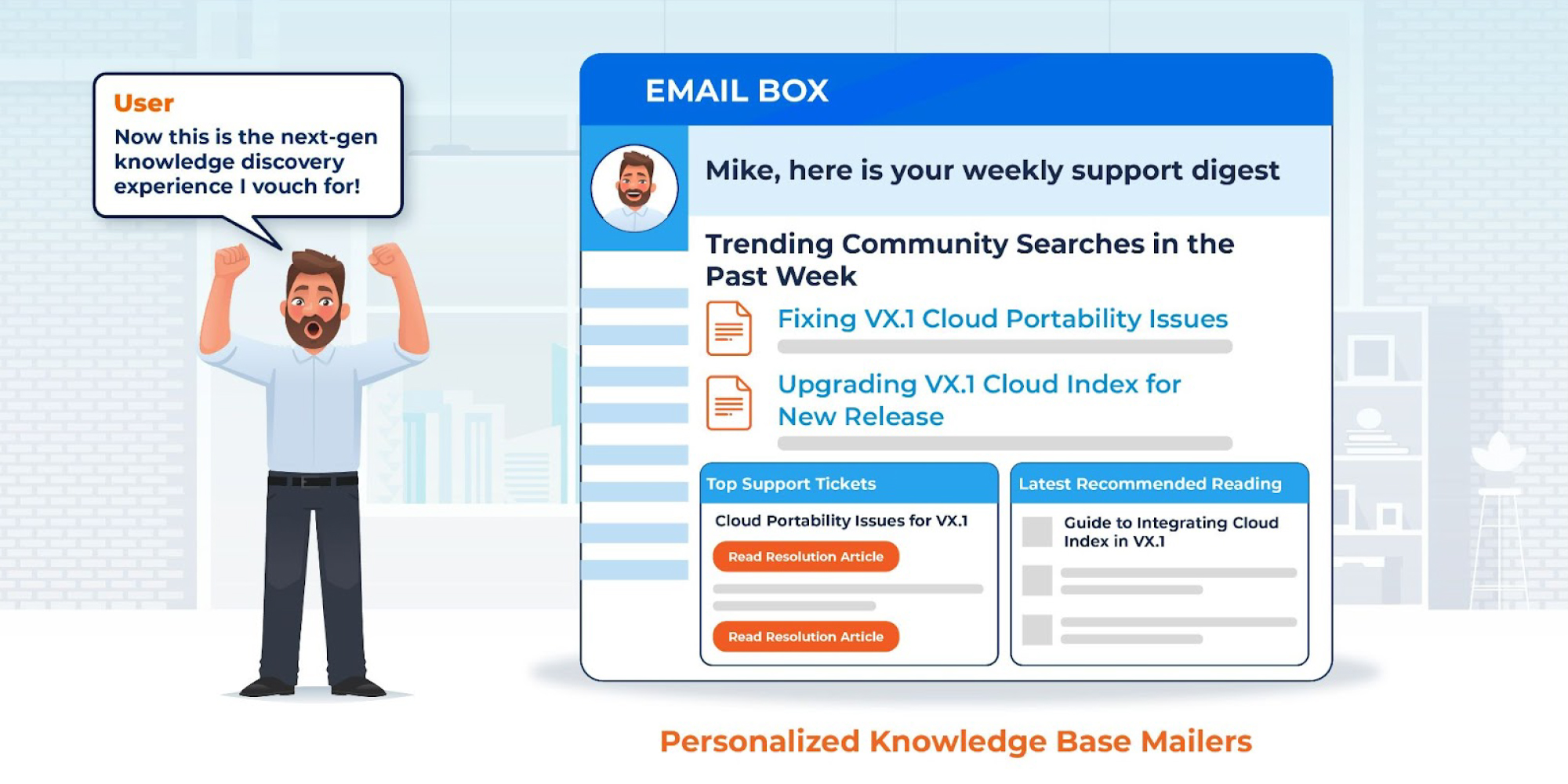
Unlock the Power of Intelligent Content Recommendations with SearchUnify
In a world where attention spans are becoming increasingly shorter, users expect to see content that is tailored to their interests and preferences. And now that you know how SearchUnify can help you deliver intelligent content recommendations, request a demo to see the process live in action.


















